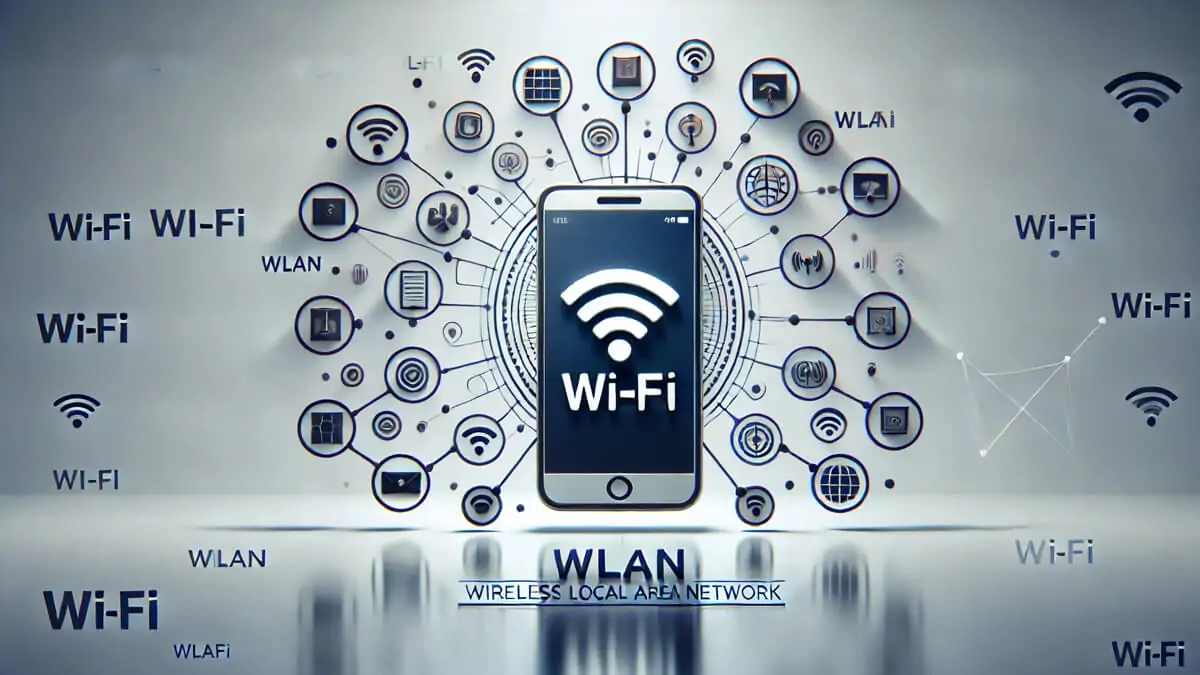WLAN stands for Wireless Local Area Network. It is a type of wireless network that allows devices to connect and communicate within a limited area, such as a home, office, or campus, without the need for physical wired connections. WLANs use radio waves to transmit data between devices like computers, smartphones, tablets, and other Wi-Fi-enabled devices. The most common standard for WLAN is Wi-Fi, which enables devices to connect to the internet and share data wirelessly.
Key Features of WLAN
- Wireless Connectivity: WLAN provides a wireless connection to the network, eliminating the need for cables. This allows devices to connect from anywhere within the coverage area, offering greater flexibility and mobility.
- Access Points (APs): Access points are devices that facilitate wireless communication between devices in a WLAN. They serve as a bridge between the wireless devices and the wired network, such as a router or modem.
- Wi-Fi Standards: WLANs typically use Wi-Fi standards (such as IEEE 802.11) to define the technical specifications for wireless communication. These standards determine the speed, frequency, range, and security features of the network. Common standards include 802.11n, 802.11ac, and 802.11ax (Wi-Fi 6).
- Frequency Bands: WLANs operate on specific frequency bands, typically 2.4 GHz and 5 GHz. The 2.4 GHz band offers longer range but may be more prone to interference, while the 5 GHz band provides faster speeds and less interference, but with a shorter range.
- Encryption and Security: WLANs use encryption protocols, such as WPA2 and WPA3, to secure the wireless communication and protect the data from unauthorized access. This ensures the privacy and security of the network.
- SSID (Service Set Identifier): The SSID is the name of the wireless network. It helps devices identify and connect to the correct network, especially in areas with multiple WLANs.
Uses of WLAN
- Internet Access: WLANs are commonly used to provide wireless internet access in homes, offices, public places, and educational institutions. This allows multiple devices to connect to the internet simultaneously.
- File Sharing and Networking: WLANs enable devices within the same network to share files, printers, and other resources. This is useful in both home and business environments for collaboration and data sharing.
- Media Streaming: WLANs facilitate the streaming of media content, such as videos, music, and games, from one device to another. For example, streaming movies from a laptop to a smart TV.
- Smart Home Devices: Many smart home devices, such as security cameras, smart thermostats, and home assistants, connect to the home network via WLAN. This allows for remote monitoring and control of these devices.
- Mobile and Remote Work: WLANs support mobile and remote work by providing wireless connectivity for laptops, smartphones, and tablets. Employees can access the internet and company resources from anywhere within the network’s coverage area.
Importance of WLAN
WLANs play a crucial role in modern communication and connectivity. They provide a convenient and flexible way to connect devices to the internet and each other without the constraints of physical wiring. This enhances productivity, mobility, and convenience in both personal and professional settings. As technology advances, WLANs continue to evolve, offering faster speeds, better security, and greater reliability. The widespread adoption of WLAN technology has made wireless connectivity an essential aspect of daily life, enabling seamless communication, collaboration, and access to information.


